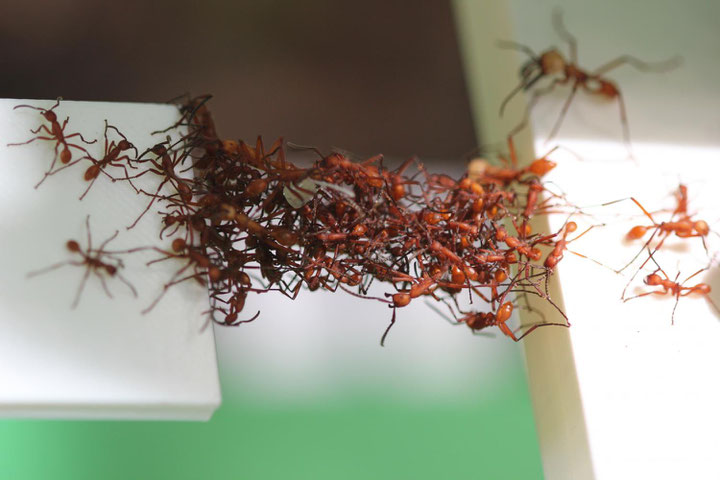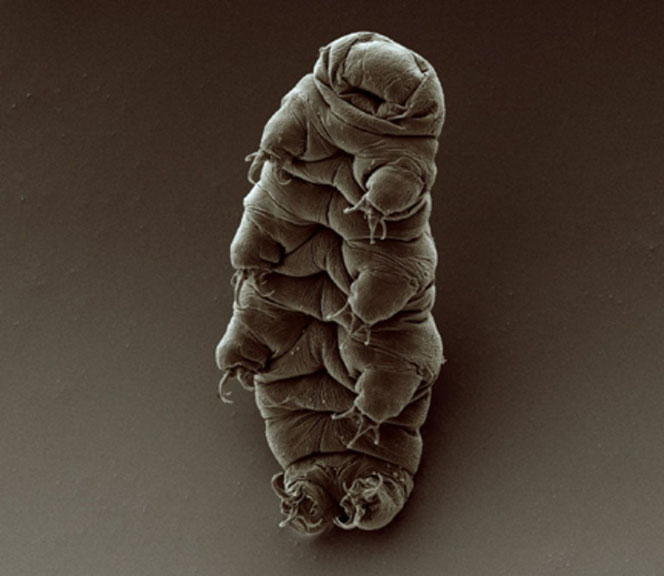Issue 1/2018 - Net section
Animal Intelligences
Non-human problem solving and the limits of “speciesism”
Clever Hans was a remarkable horse. He lived in Germany at the beginning of the 20th century and could do something that no other horse can do: math. He could count and perform basic arithmetical operations like adding, subtracting, dividing and multiplying. He would travel with his owner, Wilhelm von Osten, and together they would perform in front of live audiences to demonstrate how intelligent Clever Hans was. Von Osten would ask Hans a question, like: “What’s two plus two?,” and Hans would answer by tapping his hoof the appropriate number of times. And he always got it right.
Clever Hans became so famous that he eventually attracted the attention of scientists. After testing Hans’ abilities under several different conditions, researchers found that Hans would only get the answer right when the person asking the question knew the answer herself. So, if someone who didn’t know any math asked him what two plus two was, Hans would tap his hoof a random number of times, thus getting the answer wrong. The scientists eventually found that the reason for this was that Hans was not, in fact, performing mathematical calculations. He was simply reading the body language of the person asking the question, and determining, by means of the detection of a subtle change in the gesture or the posture of that person, when it was time to stop tapping his hoof.
This story is told in comparative psychology departments all over the world to teach future researchers about the importance of controlling for all the different variables that might affect the results of an experiment. The moral of the story is that, if one does not control for these variables, an animal can appear clever when, in fact, she isn’t. But there is another moral to extract from this story. We tend to consider that Hans was not so clever after all when we learn about his little ‘trick,’ and this illustrates how humans consider animals to be intelligent only when they do something that is characteristically human, like math. When an animal does something that we cannot do (I think it’s fair to say that we would all have a hard time emulating Hans’ behavior reading skills), we write it off as the result of some sort of instinct, or some other ‘lesser’ capacity that cannot rival true (i.e. human) intelligence.
What the story of Clever Hans illustrates, then, is that our conception of intelligence is highly anthropocentric. We consider ourselves to be the pinnacle of creation, the intelligent species par excellence, and only those animals whose abilities resemble ours are deemed worthy of this appellation. This anthropocentrism is evident in the ways in which scientists have traditionally tested the so-called intelligence of animals. The tested subjects have been placed in highly artificial situations that differ greatly from their natural environment in order to determine whether they possess typically human abilities: language, tool use, morality, and so on. While the performance of a lot of species in these tests has been surprising, these studies in fact say more about our own species than about the animals tested. And the basic message they come with is this: we think of ourselves as the most important species on Earth.
We have been rating animals on a scale from zero to human when perhaps we should be looking at the particular, species-specific and non-human, ways of being intelligent that each species exhibits. Here are some examples of animal’s exhibiting a form of intelligence that differs from our own. Clark’s nutcracker, a type of bird, will gather up to 30,000 seeds during the summer, and store them in hundreds of different locations. He will remember each of these locations with astonishing precision, and recover the seeds stored in them up to nine months later. All of this without pen and paper. Foraging honeybees, after they have found something useful for the hive, like a source of food, return to the nest and perform a little waggle dance in front of their mates. This dance indicates, with great accuracy, the distance at which the resource is found (the longer the waggle, the longer the distance), and the angle at which the waggle is performed indicates the direction of the resource relative to the current position of the sun. The other bees can then use this information to locate the object without difficulties, even if it is several kilometers away. All of this without language. Fire ants, who are remarkably inept if isolated, have an incredible capacity to coordinate their behavior when there are several of them together, which renders them highly resilient as a group. They can build water-proof rafts and bridges out of their own bodies, and behave like a liquid or a solid depending on the requirements of the situation. All of this without any one of them being in charge.
One could possibly object here by saying that while humans do not use the same methods these animals do, we can nevertheless find alternative ways of solving the problems these species face: using pen and paper to record what surpasses the capacity of our memory, communicating linguistically with others when we need to convey the location of a resource, and putting someone in charge of directing the operation when we want to coordinate our movements. One could object, further, that we should focus on the human type of intelligence because we are, after all, the superior species, the best at problem-solving, and it makes sense to rate all others in comparison to us. However, this notion of human superiority is also highly anthropocentric. We are only the superior species if we take as markers of superiority characteristically human abilities, like language, rationality or, in this case, problem-solving. But if we were to measure superiority on a different scale, something different might come out.
Take the example of tardigrades. Also known as water bears, they are a type of micro-animal, only about half a millimeter long. Tardigrades are present in almost every habitat on Earth, and they are by far the toughest animals. They can survive without food or water for up to thirty years and withstand temperatures close to absolute zero and up to 150ºC, as well as pressures 1200 times greater than that of the atmosphere. They can take hundreds of times the radiation that would kill us and can even survive for several days in the vacuum in outer space. They have survived five mass extinctions and will probably still be around long after the conditions on Earth can no longer sustain us. So, if we were to measure superiority in purely biological terms, in terms of sheer survival capacity, the tardigrades would be the superior animals, not us.
There is a very famous cartoon that depicts several animals from different species in front of a tree, while a human examiner says: “For a fair selection, everybody has to take the same exam: please climb that tree.” This cartoon is often used to illustrate the failure of our educational system to acknowledge that there are many different ways in which humans can be intelligent, and that it does not make sense to rate all of us on the same scale. But we can take it more literally and use it to illustrate that when we discuss the behavior and the minds of animals, using the general term ‘intelligence’ is too narrow-minded. We should not talk about animal intelligence. Instead, we should talk about animal intelligences, or the different ways in which animals are intelligent.



